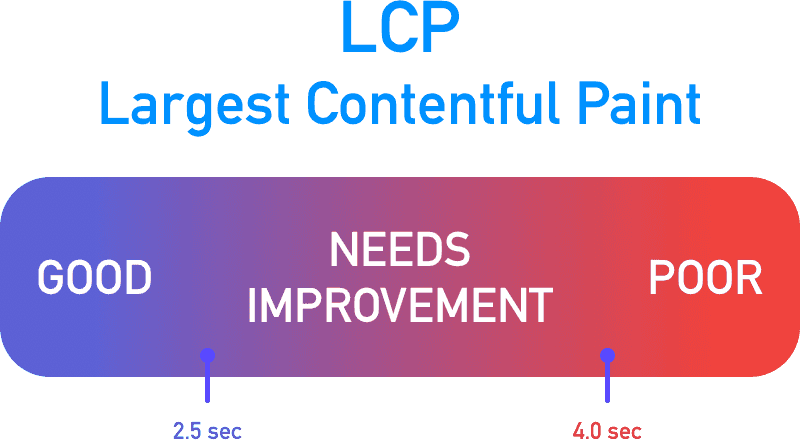What is the Largest Contentful Paint (LCP)?
Largest Contentful Paint (LCP) is a Core Web Vital metric that measures the perceived loading speed of a web page. It specifically measures the time taken for the largest element in the viewport to be rendered on the screen.
What is a Good LCP Score?
Google recommends an LCP of 2.5 seconds or faster for a good user experience. A faster LCP can lead to better user engagement, lower bounce rates, and higher conversion rates.
Why is Largest Contentful Paint important for SEO?
Largest Contentful Paint (LCP) is an essential factor for search engine optimization (SEO) because it is a crucial element of user experience. Google has introduced a set of performance metrics known as Core Web Vitals, which includes LCP, to help websites optimize for better user experience. Google has indicated that it will use Core Web Vitals as a ranking factor in its search algorithm starting in June 2021. Therefore, website owners and developers should prioritize optimizing their website's LCP to ensure a better user experience and improved SEO performance.
How to Measure LCP?
To measure LCP, you can use various web performance testing tools, including Google PageSpeed Insights, Lighthouse, and WebPageTest. These tools can provide you with a detailed report of your website's LCP, along with recommendations for improvement.
How to Improve LCP?
To improve your website's LCP, you can take the following steps:
- Optimize images and videos by using optimized images and videos that are appropriately sized and compressed without compromising quality.
- Minimize render-blocking resources by avoiding render-blocking resources such as CSS and JavaScript files that may delay page loading. Use techniques such as code splitting and lazy loading to defer loading of non-critical resources.
- Improve server response time by optimizing server response time by using a content delivery network (CDN), reducing the size of responses, and minimizing the number of requests.
- Prioritize visible content by prioritizing above-the-fold content to ensure that the most important content appears on the screen as quickly as possible.
- Eliminate unnecessary third-party scripts by removing unnecessary or non-essential third-party scripts that may add bloat to your website and slow down the loading speed.
- Use a performance monitoring tool, such as Google PageSpeed Insights or WebPageTest, to identify performance issues and track improvements over time.
By following these steps, you can significantly improve your website's LCP, provide a better user experience, and improve your SEO performance.
